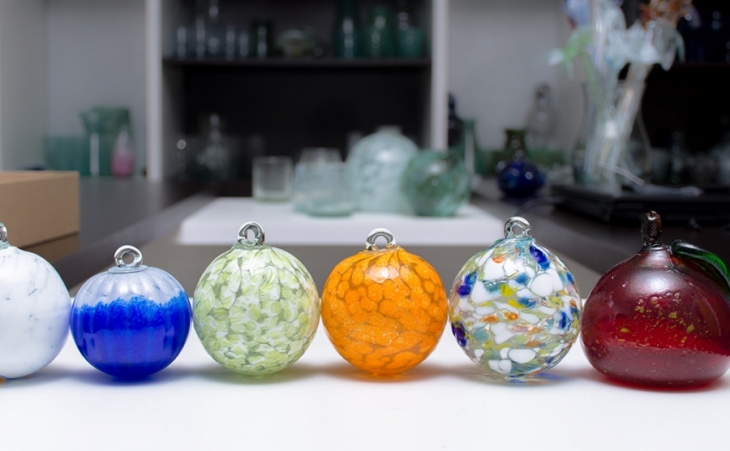
Visit AKAM-Verrerie de Carthage, the luxury blown glass workshop. 40 km from Tunis, you will discover secular expertise at the service of contemporary design.
It was in Soliman, between Tunis and Hammamet, that Khaled Azaïez fired up his first kiln in 2013. Christened Dido in honour of the first queen of Carthage, since then, this kiln has never been extinguished. It continues to run 24 hours a day, 365 days a year. Out of its incandescent entrails come sleek-lined glass works of unparalleled refinement: vases, carafes, cups...Expertise which goes back a long way. The Carthaginians mastered the art of glass paste, and the Tunisians of the Roman era practiced glass blowing. During the early Middle Ages, the workshops of Kairouan and Mahdia produced carafes, cups and flasks that today can be admired at the Bardo Museum. The craftsmen that, since the 1970s, have been reviving the art of glass blowing in Tunisia are tapping into this ancient history.
If you are travelling between Tunis and Cape Bon, do not miss visiting the Verrerie de Carthage workshop: its doors are open free of charge to visitors. Don’t forget to take a look in their shop: you will be amazed by the quality of the pieces and their very affordable prices.
And if it is a Friday, you could even share some of the couscous that is prepared each week for the staff: “Everyone who is with us on that day eats with us”, Khaled Azaïez announces.
The Verrerie de Carthage makes all kinds of tableware products, but also unique pieces: fish, penguins, Murano-style flowers. It even makes, starting this year, Christmas baubles from blown glass.
These products are much appreciated in certain embassies, such as that of the United States: “They love these kinds of pieces, especially the ones in blue glass”, Khaled Azaïez explains.
Visit the workshop to see the artisan glassmakers manually gather up the glass with their blowpipe, then give it the first puff of air before applying frits and coloured oxides. The workshop practices what is known as colour overlay, where a layer of colour is imprisoned between two layers of glass: after the oxide dyes, the piece receives a second layer of glass before being blown into shape.
The next step happens in the other section of the workshop, the finishing side. Here the master glassmaker and his assistant remove the top part of the piece and give it its final appearance. All of these operations are carried out manually, and the glass must be regularly heated up to keep it at a constant temperature for the whole time the piece is being worked. The piece then passes to the finishing table to be stamped while still warm.
24 hours in an annealing oven are still needed before the pieces can be displayed in the glass workshop store or be sent to their buyers, sometimes abroad.
A 100% Tunisian manufacture with Tunisian craftsmen trained on-site. The workshop is currently hoping to recruit women. “This summer, we received some young female interns from the Fine Arts school, and that completely changed the atmosphere of the workshop”, says Khaled Azaïez. “Those who had problems respecting working schedules arrived early, those who neglected to take care of themselves had impeccable work uniforms. And there was real competition among the glassblowers to pass on their knowledge! Some of the girls managed to blow glass during their second week.”
Glass blowing women are already practically a tradition in Tunisia: the craft of glassblowing was revived in effect in the 1980s by a woman, Sadika Keskès.